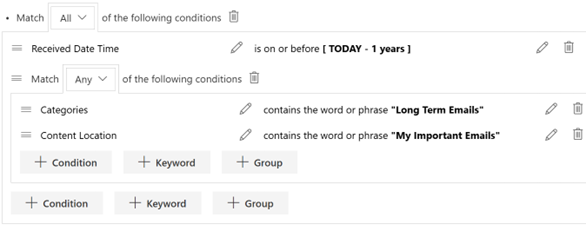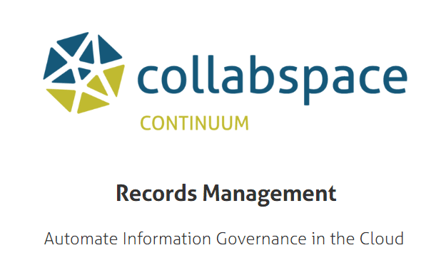While I'm relatively new to the records management industry, being on the forefront of the business development team at Collabware I've had the opportunity to hear about various organizations' RM strategies and experiences.
What makes up a RM program that leaves positive impact on an organization? Highlighted below are three recurring factors I've observed in successful records management programs.
User Adoption, User Adoption, User Adoption
Records management is not an easy responsibility by any measure, and it's hard to expect your organizations' employees taking ownership of it unless it has minimal impact on their day-to-day.
Great RM software should be so user-friendly that end users do not even realize they are part of an RM program. High user adoption rates are more likely if there is integration with familiar applications.
Records Managers as Organizations' Custodians of Knowledge
Records Managers who are given the right tools should experience enhanced capabilities in their role. When properly equipped, they can do much more than what was possible with traditional RM. Some examples include:
- Protecting their organizations from legal risk by following through with retention and disposition schedules. Also, being able to find content and place legal holds.
- Leveraging the value of content by demonstrating RM Capture Rates.
- Helping other departments' business processes by leveraging the same tools used to create life-cycle workflows in other business areas.
Less IT End User Support
RM workflows that involve retention and disposition follow a simple logic, yet when software is too complicated, IT needs to get involved to assist. Relating back to my first point, providing user-friendly software with features such as easier visual drag-and-drop workflows and code-free applications allows for less end user reliance on IT, resulting in higher user adoption.
However, since IT involvement is necessary for other aspects of an RM program, such as Information Architecture, it is also important to have solid communication and understanding between IT and RM staff.
With focus on these three areas for your RM program, organizational impact will include more engaged employees, increased control of content, higher task capacity for records managers, and potential for massive gains in productivity and ROI.
Are you ready to lead positive impact in your organization? Collabware provides Records Management Software that is simple, seamless, transparent, and ideal for user adoption. To learn more, please contact us with any questions or sign up for a free product demo.




